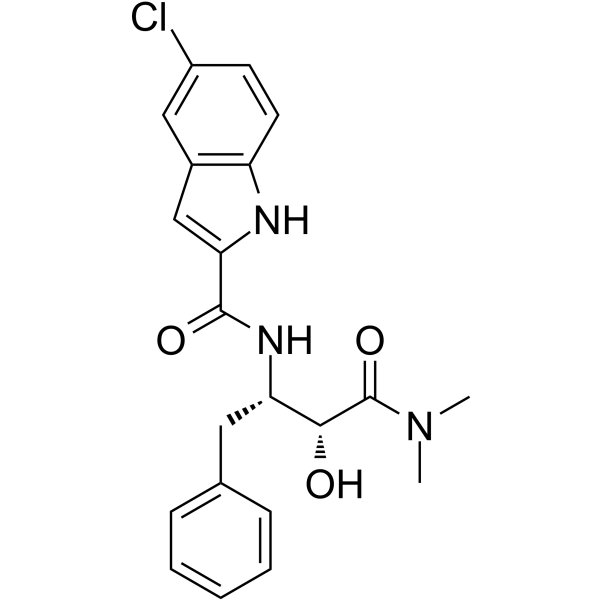| Cas No.: | 186392-40-5 |
| Chemical Name: | CP-91149 |
| Synonyms: | CP-91149;CP 91149;CP91149 |
| SMILES: | O=C(C(N1)=CC2=C1C=CC(Cl)=C2)N[C@@H](CC3=CC=CC=C3)[C@@H](O)C(N(C)C)=O |
| Formula: | C21H22ClN3O3 |
| M.Wt: | 399.87 |
| Purity: | >98% |
| Sotrage: | Please store the product under the recommended conditions in the Certificate of Analysis. |
| Description: | CP-91149 is a GP (glycogen phosphorylase) inhibitor. CP-91149 promotes glycogen resynthesis, but not its overaccumulation. CP-91149 has the potential for Type II (insulin-dependent) diabetes study[1]. |
| In Vitro: | CP-91149 treatment decreases muscle GP activity by converting the phosphorylated AMP-independent α form into the dephosphorylated AMP-dependent b form and inhibiting GP α activity and AMP-mediated GP b activation[1]. CP-91149 (10, 30, 50 μM) inhibits brain GP and causes glycogen accumulation in A549 cells[2]. Cell Viability Assay[1] Cell Line: Cells were transduced with adenoviruses and incubated in the presence of 25 mM glucose for 2 days. Concentration: 10 µM (glucose− or glucose+ for 18 h). Incubation Time: 3 h. Result: Promoted the conversion of GP a into GP b, according to α model proposed in hepatocytes. Western Blot Analysis[2] Cell Line: A549 cells. Concentration: 0, 10, 30, 50 μM. Incubation Time: 72 h. Result: A significant increase in glycogen accumulation was detected at 10 μM of CP-91149 as compared with untreated cells with a maximal glycogen accumulation at 30 μM. Intracellular glycogen content decreased at 50 μM CP-91149, perhaps explained by additional pharmacological effects of the drug. The dose-dependent accumulation of intracellular glycogen in A549 cells by CP-91149 indicates that CP-91149 inhibits brain GP in tissue culture. |

 To enhance service speed and avoid tariff delays, we've opened a US warehouse. All US orders ship directly from our US facility.
To enhance service speed and avoid tariff delays, we've opened a US warehouse. All US orders ship directly from our US facility.




















